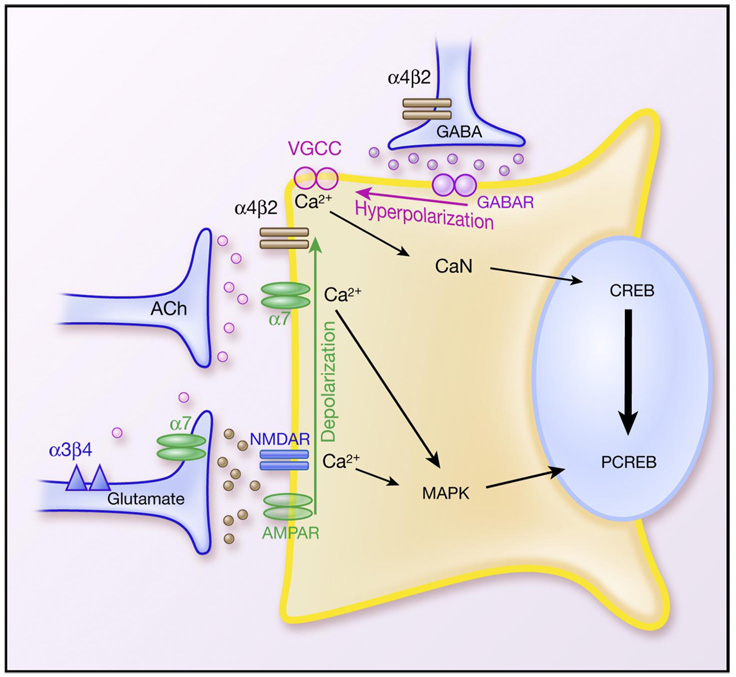FIG. 6.
Schematic representation of intracellular signaling resulting from activation of nAChRs, glutamate ionotropic receptors, and GABAA receptors. In the CA1 field of the hippocampus, a single interneuron can express somatodendritic α7 and α4β2 nAChRs and receive α3β4/β2 nAChR-regulated glutamatergic inputs. Thus there is the potential that intracellular signaling is regulated by the cross-talk of the various transmitter systems. During a low degree of activation of α7 nAChRs and α3β4β2 nAChRs, for instance, Ca2+ may enter the cells through nAChRs or NMDA receptors and favor phosphorylation of the transcription factor CREB, which in turn modifies gene expression (82). If there is intense stimulation of all three nAChRs, the resulting depolarization can trigger activation of VGCC, which in turn would activate the calcineurin pathway and prevent CREB activation. A concurrent activation of preterminal α4β2 nAChRs would hyperpolarize the neuron via GABAergic inhibition and prevent activation of the VGCC. Such a sequential interplay between nicotinic and GABAergic signaling has been shown to guide neuronal development in the hippocampus and other regions (281).

